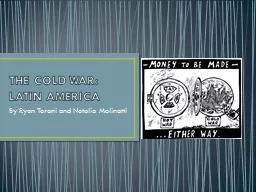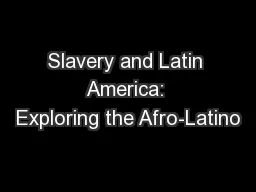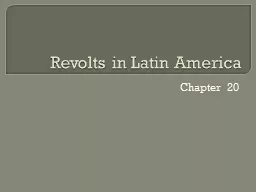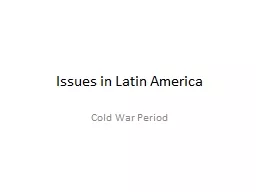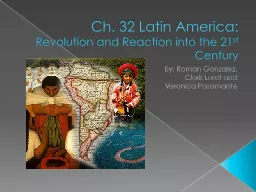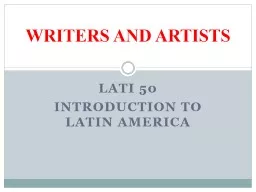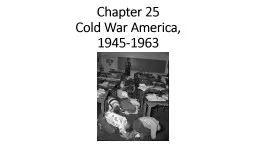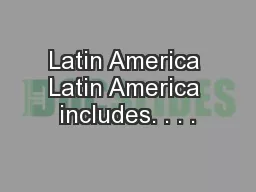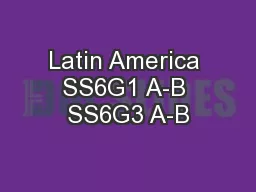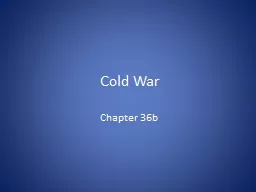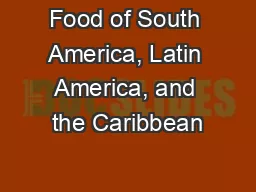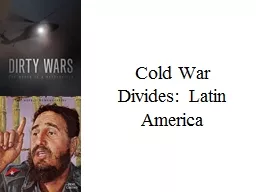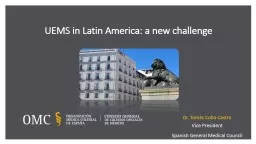PPT-THE COLD WAR: LATIN AMERICA
Author : giovanna-bartolotta | Published Date : 2018-12-19
By Ryan Terani and Natalia Molinatti Post WWII Latin America American businesses dominated Latin American politics before the war After the war the gap between
Presentation Embed Code
Download Presentation
Download Presentation The PPT/PDF document "THE COLD WAR: LATIN AMERICA" is the property of its rightful owner. Permission is granted to download and print the materials on this website for personal, non-commercial use only, and to display it on your personal computer provided you do not modify the materials and that you retain all copyright notices contained in the materials. By downloading content from our website, you accept the terms of this agreement.
THE COLD WAR: LATIN AMERICA: Transcript
Download Rules Of Document
"THE COLD WAR: LATIN AMERICA"The content belongs to its owner. You may download and print it for personal use, without modification, and keep all copyright notices. By downloading, you agree to these terms.
Related Documents

